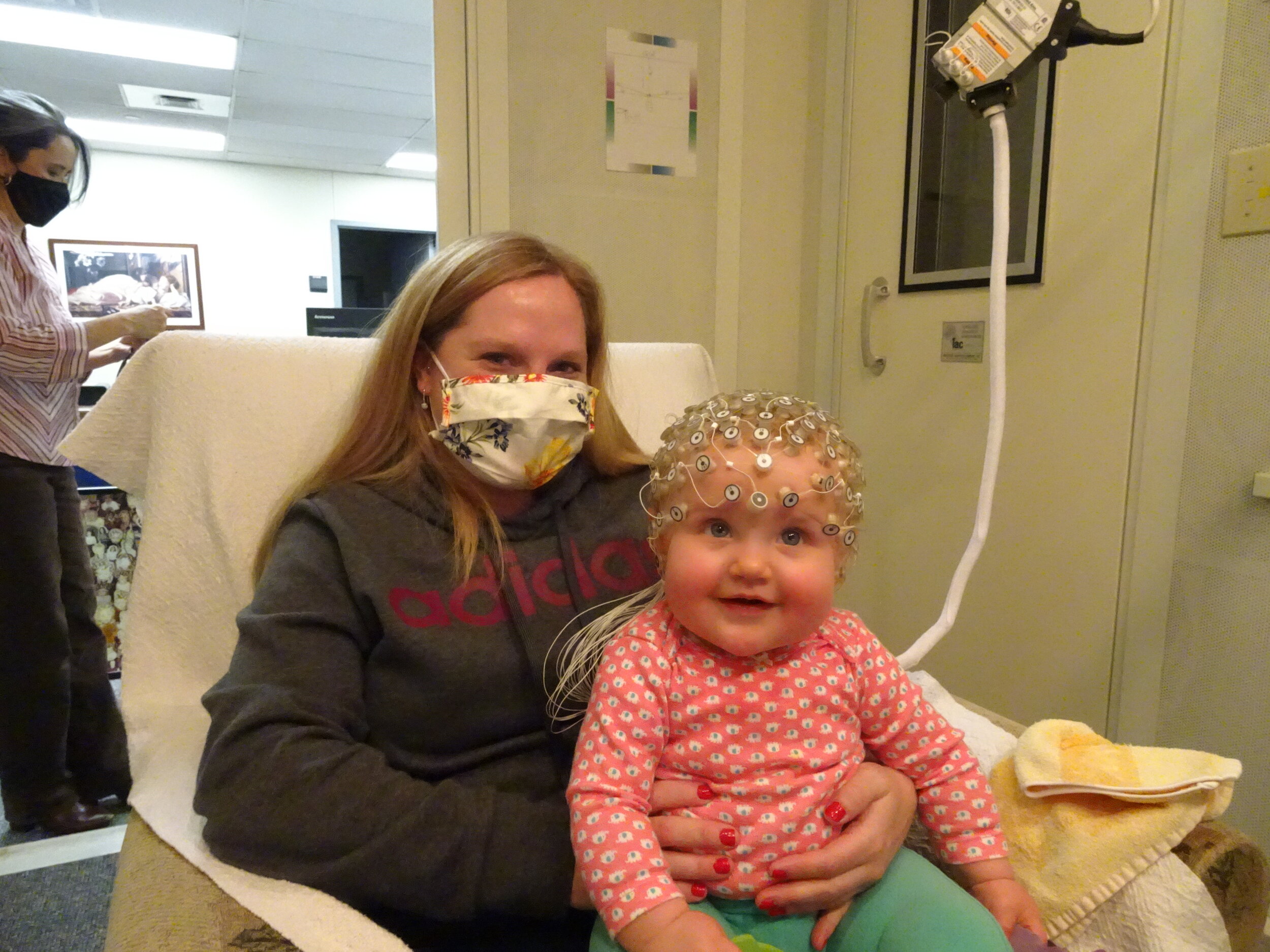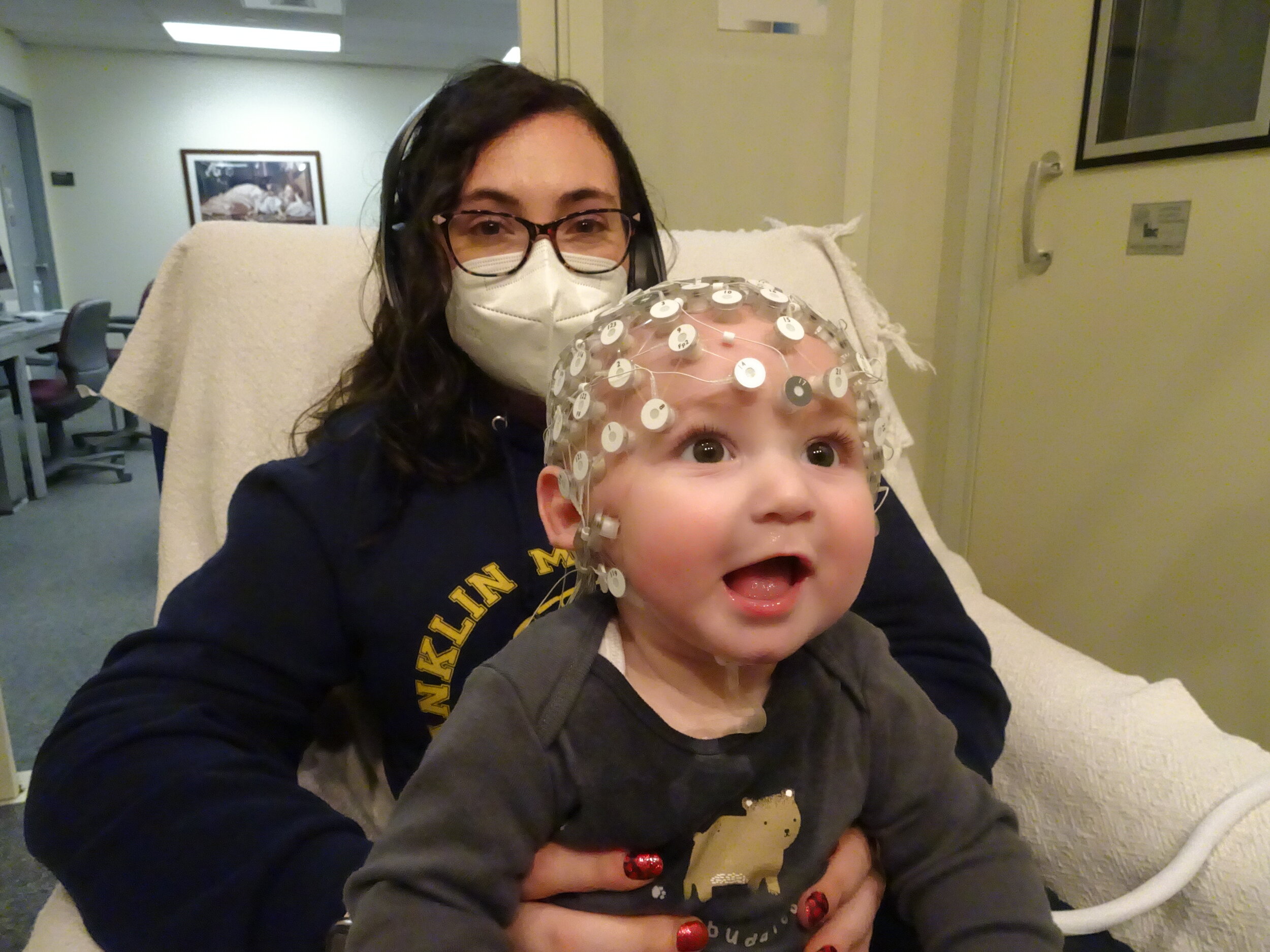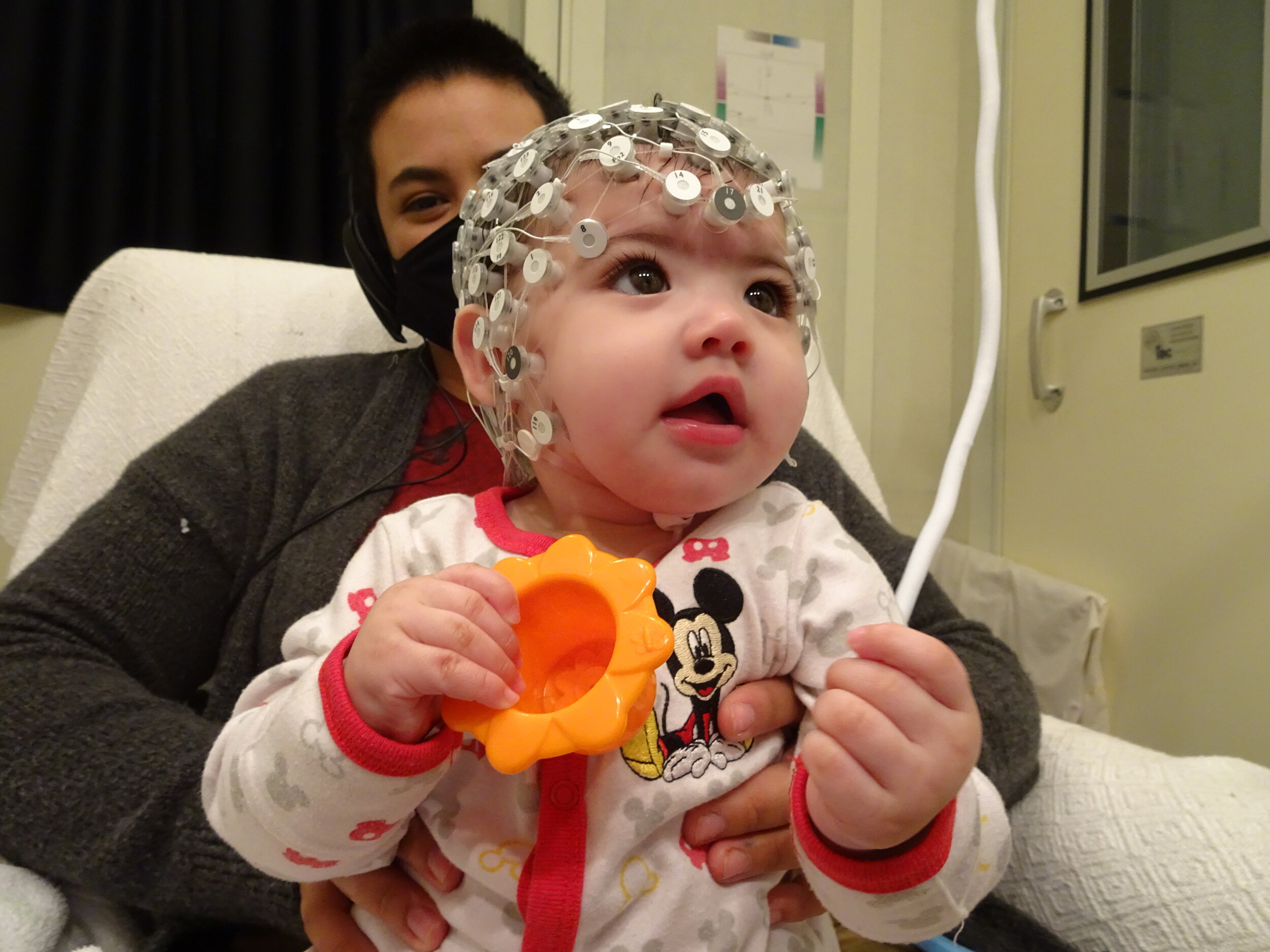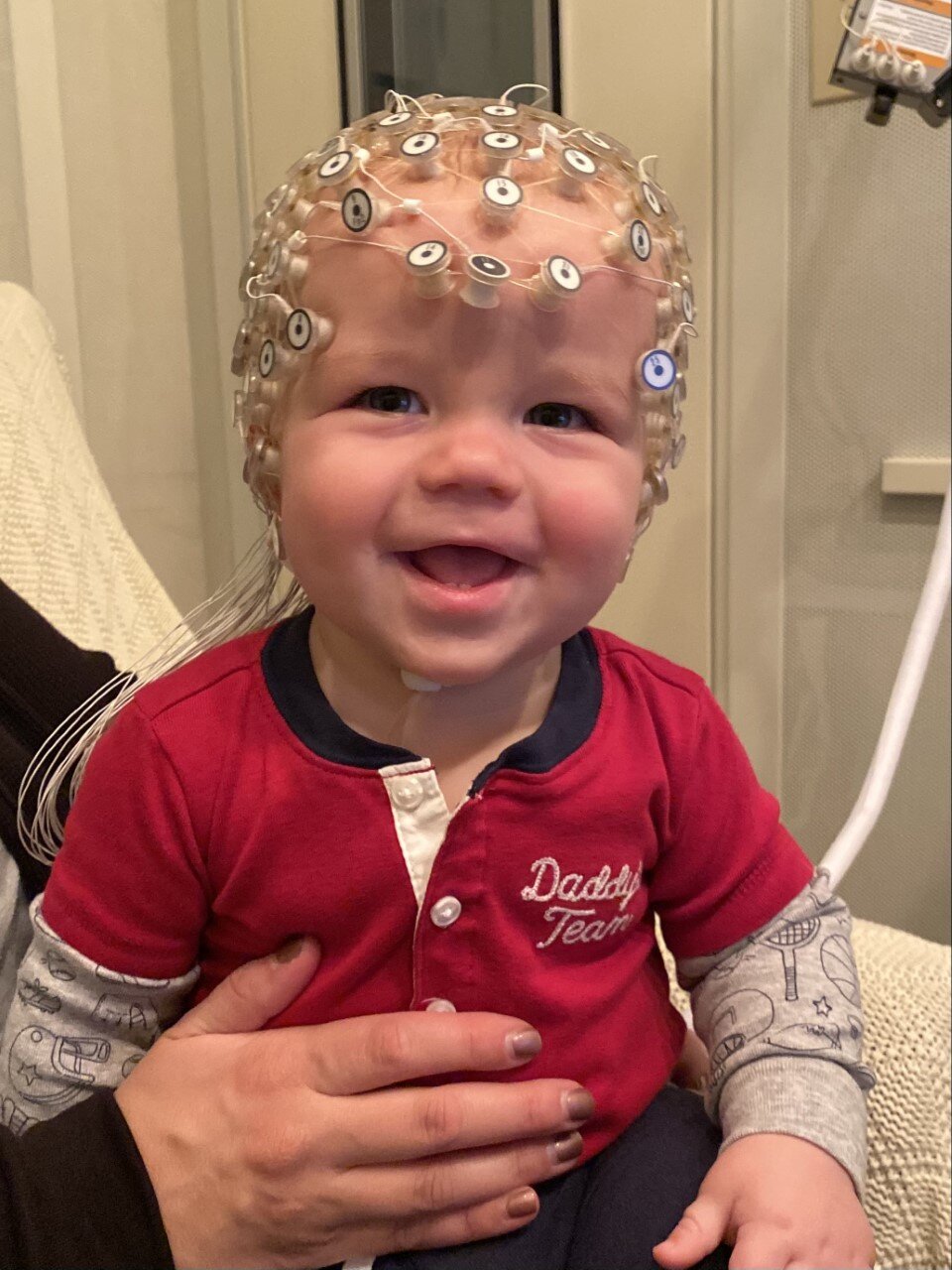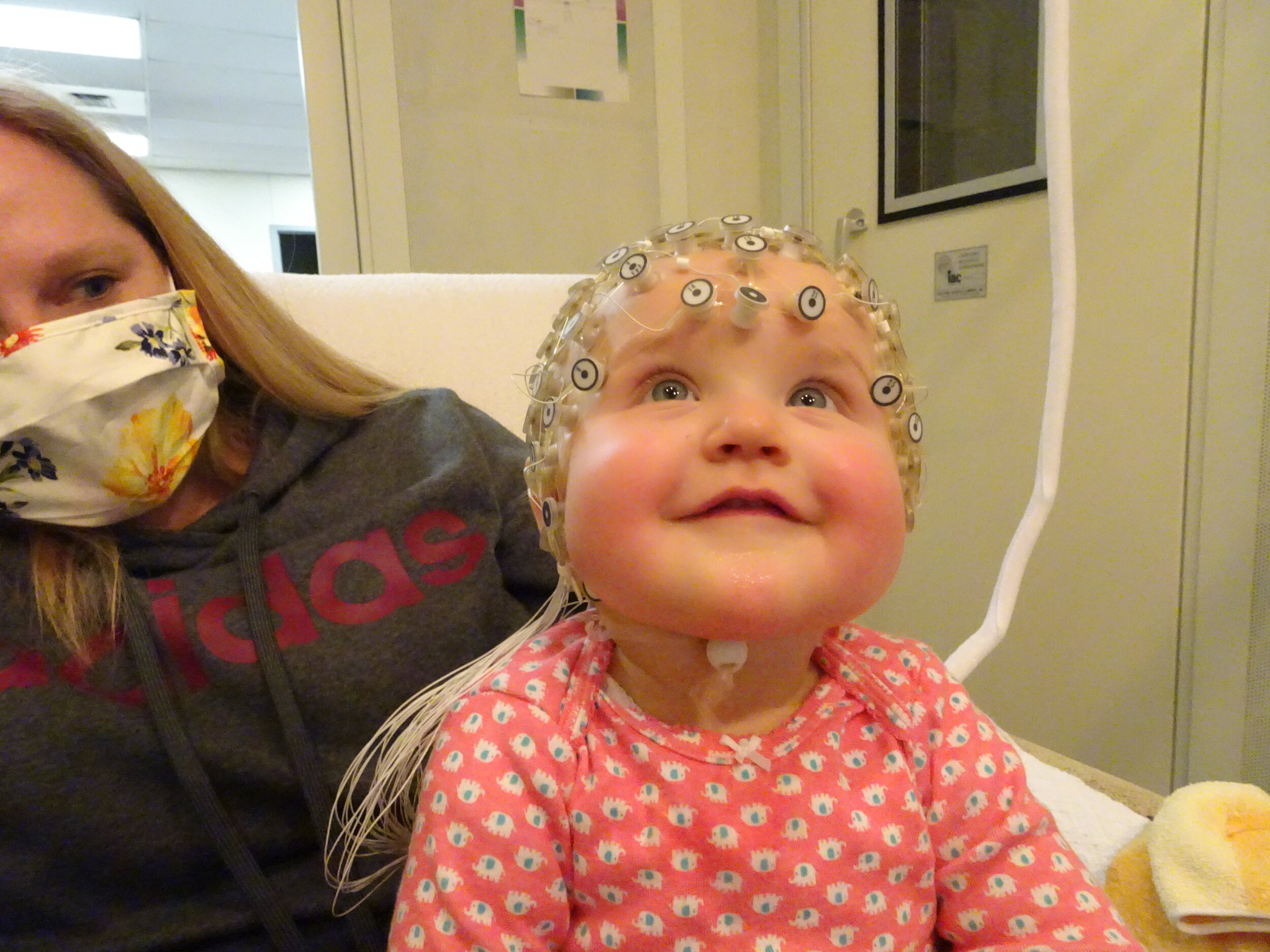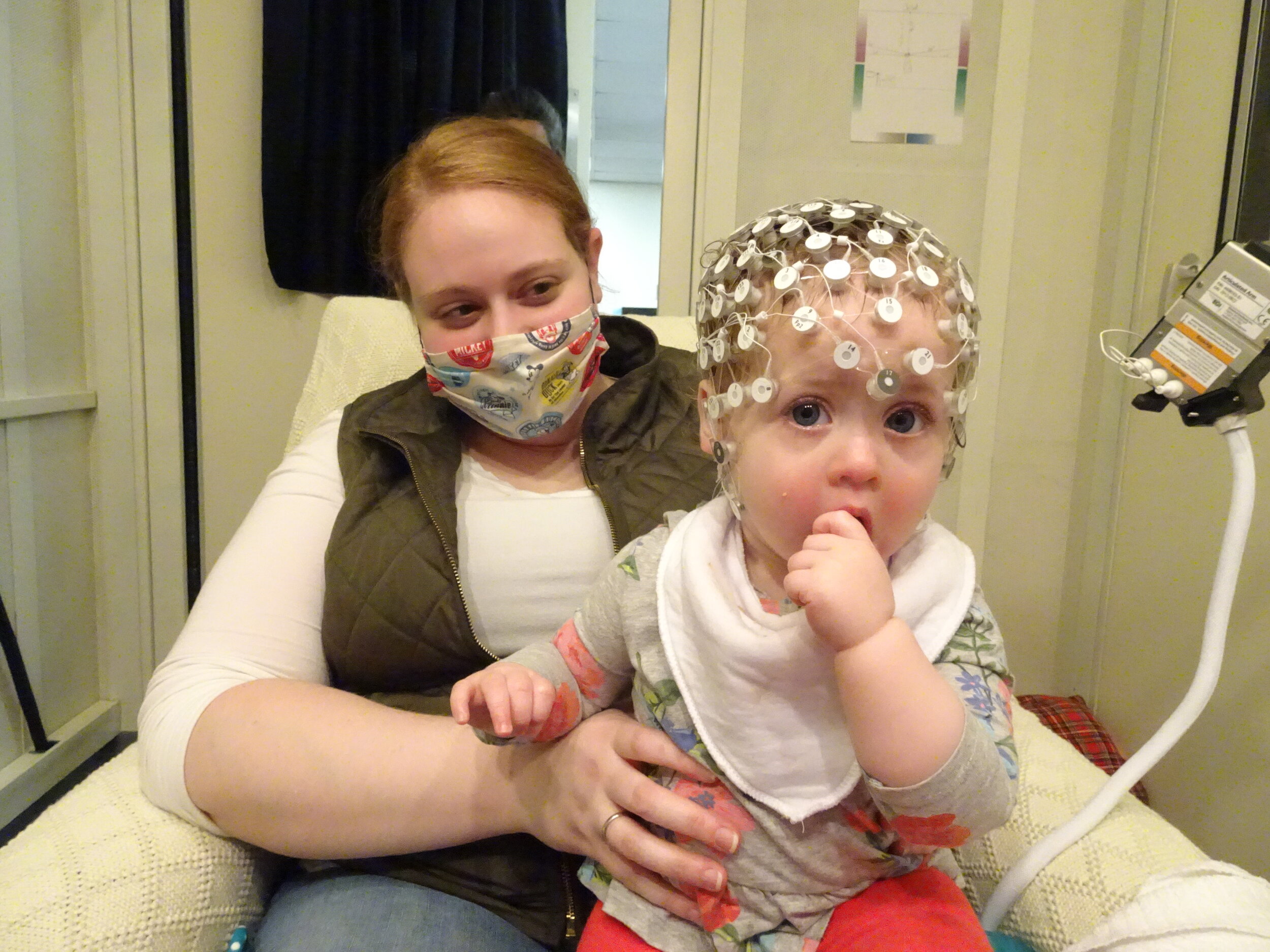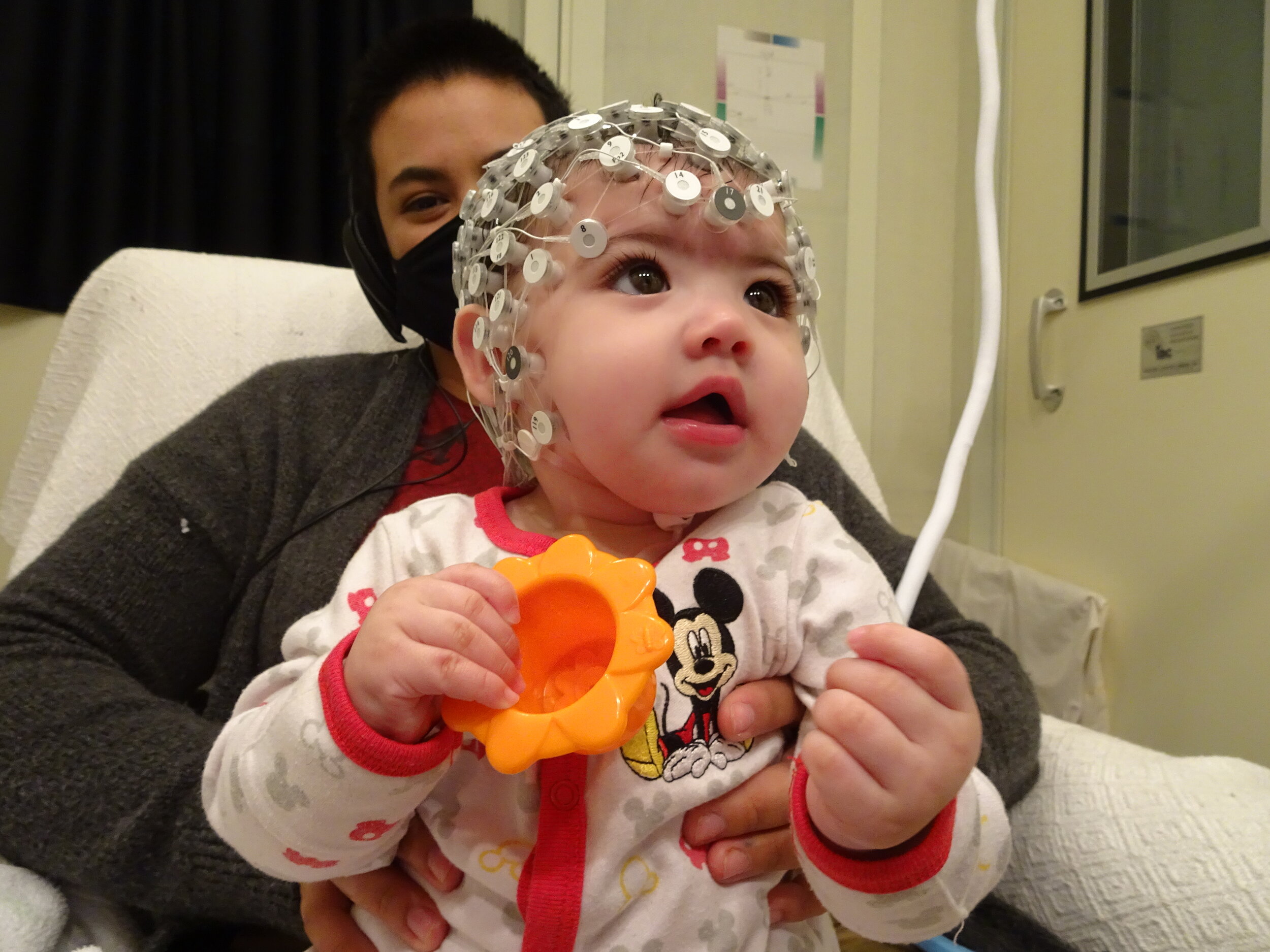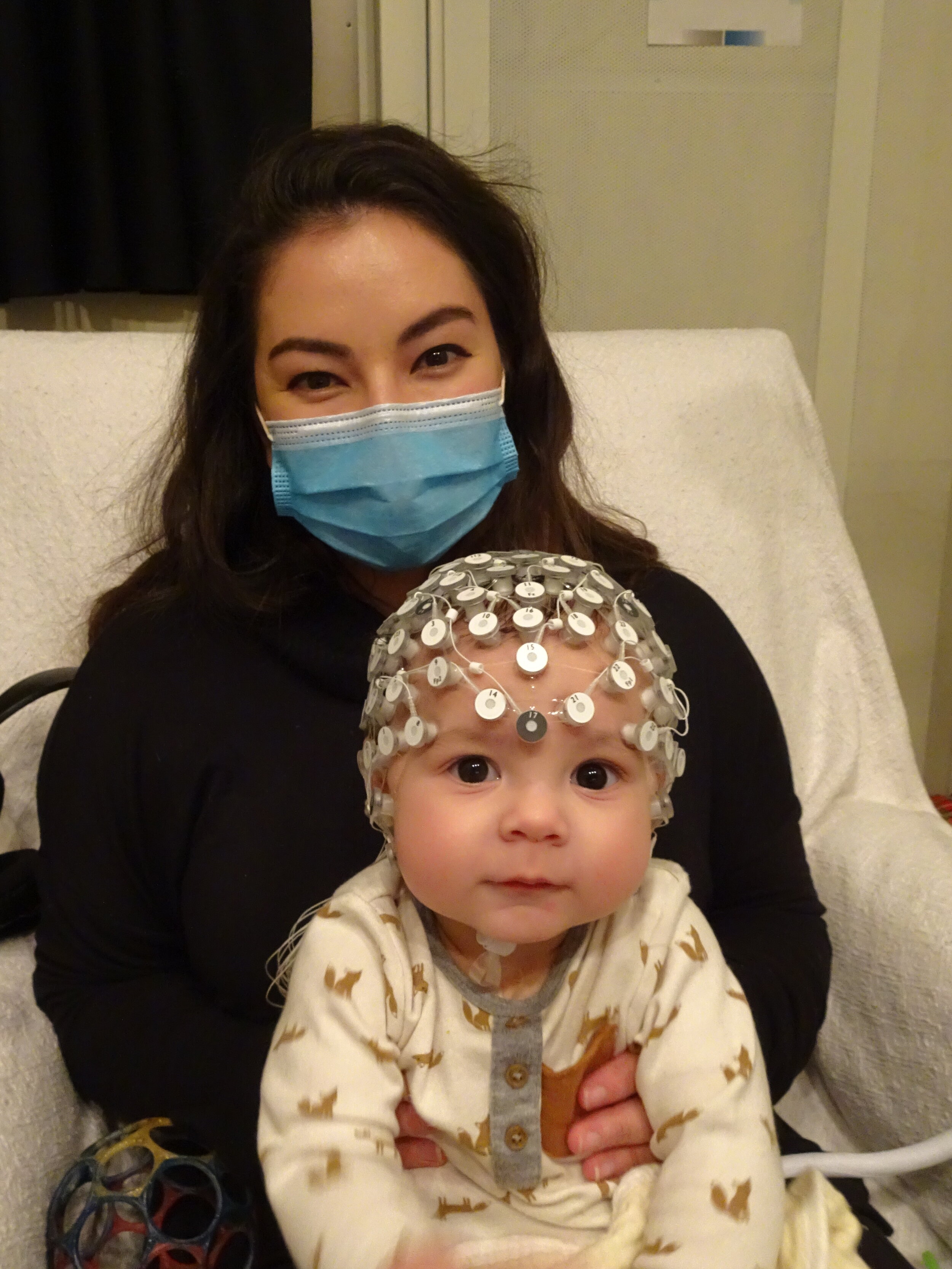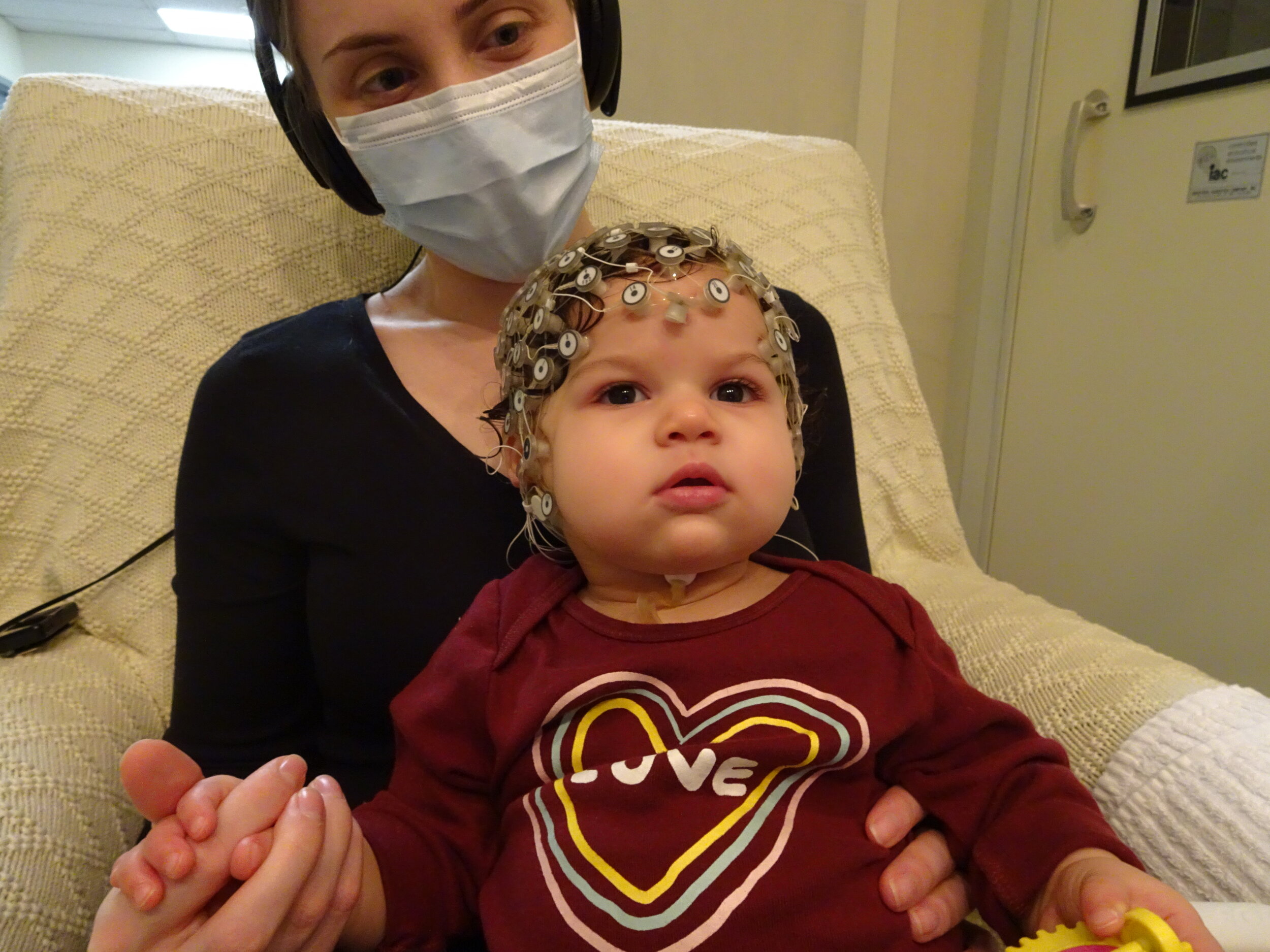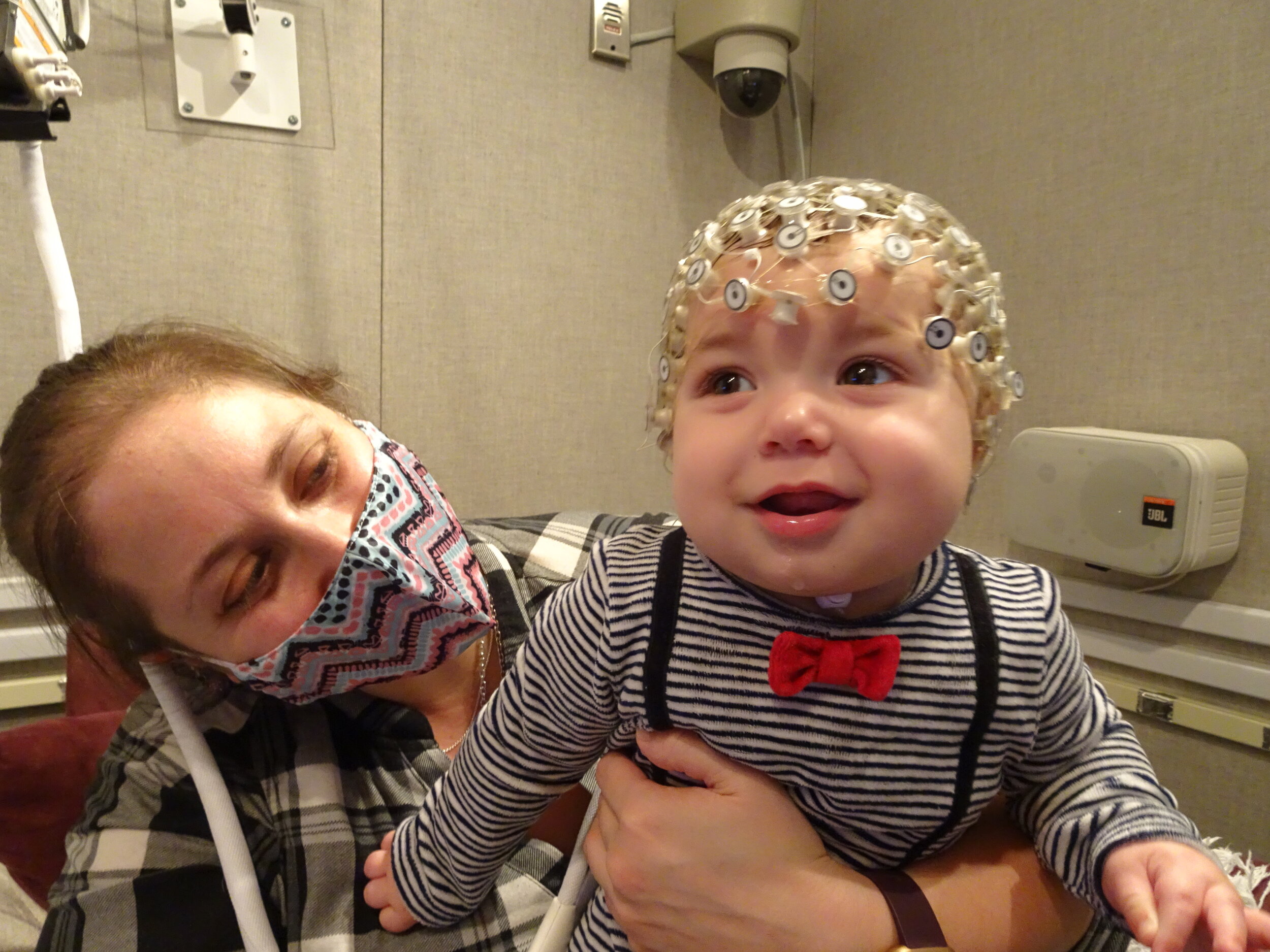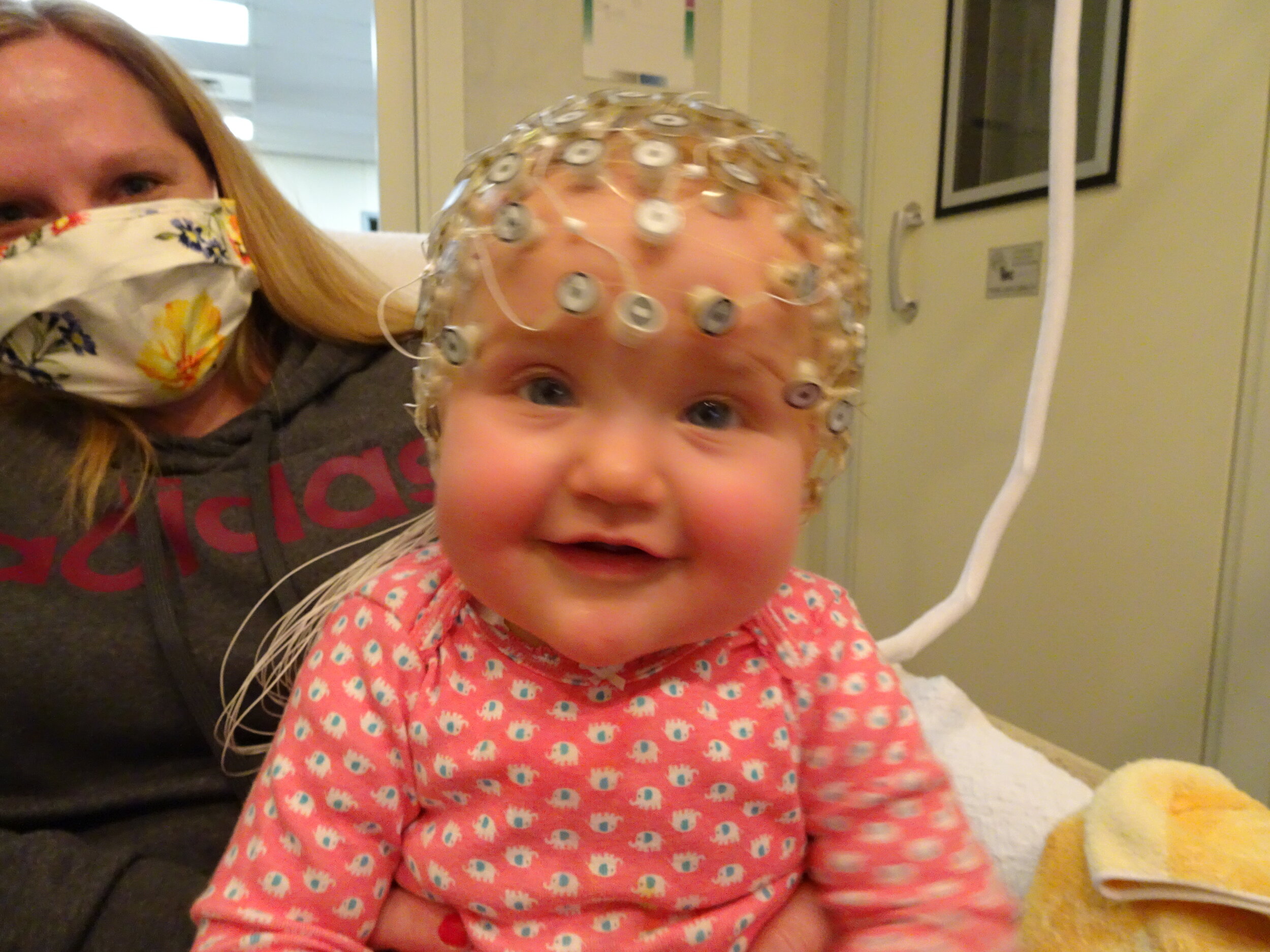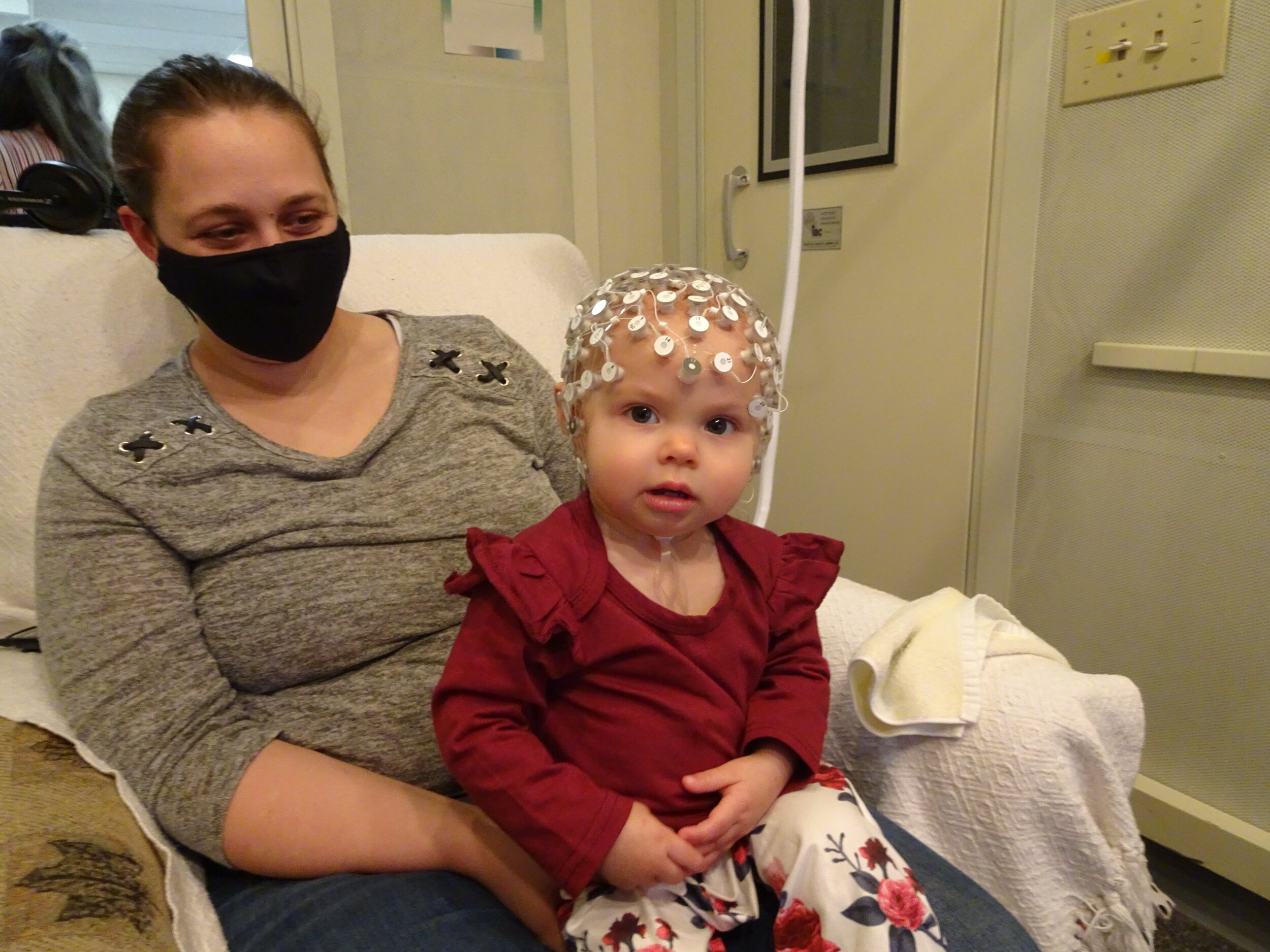Our Lab
Research at the Infancy Studies Laboratory (ISL, also known as The Baby Lab) at the Center for Molecular and Behavioral Neuroscience (CMBN) uses a range of techniques to examine sensory information processing, language, and cognitive development across the lifespan. In particular, we focus on the early neural processes necessary for normal cognitive and language development as well as the impact of disordered processing on infant neurocognitive status in high risk (e.g., family history of language-based learning impairment, autism or ADHD) or neurologically impaired infants. All of our prospective, longitudinal research is conducted on children aged approximately 3 months to 10 years.
Our methods are designed to investigate the development of temporally-bounded sensory information processing (shown to be a significant predictor of language impairment and dyslexia in older children), the neural substrates that support these developing abilities, and the relations seen with emerging language and cognitive abilities from infancy to early childhood.
The Center
The Center for Molecular and Behavioral Neuroscience (CMBN) was established by the Board of Governors of Rutgers University in 1985 at the request of the Institute of Animal Behavior and the Biological Sciences and Chemistry Departments to establish the Rutgers-Newark campus as the University's Neuroscience Center. Building on the strengths in neurobiological and behavioral research already present on the campus, the aim was to establish a center in which neuroscience would be studied at all levels from the molecular to the behavioral.
Currently, CMBN houses fourteen research teams that are at the forefront of neuroscience research. The researchers of tomorrow are being trained at CMBN in the graduate program in Behavioral and Neural Sciences and in introductory courses and summer internships designed for undergraduate students.



